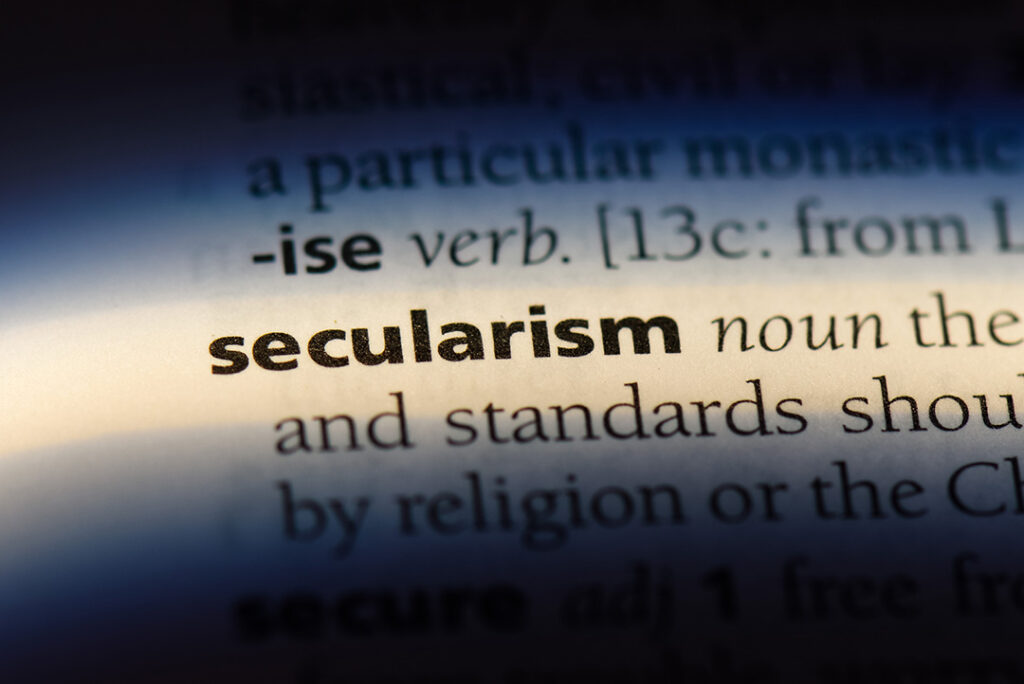Exploring the uniqueness of French laïcité in European secularism
Exploring the uniqueness of French laïcité in European secularism
Laïcité, the French conception of secularism, is among the most captivating and contentious principles of the French Republic.
Laïcité, the French conception of secularism, is among the most captivating and contentious principles of the French Republic. On the domestic front, it ignites heated debates, and on the global stage, France often contends with allegations of practising an intolerant and discriminatory system.[1]
In recent months, the debate surrounding French laïcité has intensified, both on national and international scales. Events such as President Emmanuel Macron’s attendance at Pope Francis’ mass[2] or the prohibition of the abaya in schools have rekindled old tensions.[3]
Other articles published on our website analyse the current debate surrounding French laïcité.[4] [5] However, on this occasion, we aim to explore the unique aspects of this principle and its relationship with other models of secularism in Europe, and ultimately address the question: what distinguishes French laïcité as particularly special?
What is French laïcité? What are its fundamental principles?
Embedded in the constitution, laïcité presently stands as one of the cornerstones of the French Republic. The word was coined in the 19th century to denote that which is neither ecclesiastical nor religious.[6]
Laïcité is founded on three principles. Firstly, the freedom of conscience and the freedom to express one’s convictions within the bounds of public order. Secondly, the separation of public institutions and religious organisations. And finally, the equality of all individuals before the law, regardless of their beliefs or convictions.[7]
As per the 1905 law,[8] laïcité entails the separation between the State and religious institutions. This principle of division is considered the foundation of the State’s neutrality.
However, this is not as straightforward and transparent as it may appear. For instance, President Emmanuel Macron’s attendance at Pope Francis’ mass became the focal point of a recent debate.[9] Why is that? Because, according to criticism from the left, he should not be participating in a religious service as the head of a neutral State based on the principle of laïcité. Nevertheless, since the pope has the rank of head of State and this was an official visit, Macron said it was his obligation to be present.[10] Quite intricate, is it not?
Exceptions in French territory: the case of Alsace and Moselle
One of the most intriguing aspects when studyingFrench laïcité is the fact that there are two territorial exceptions to this constitutional principle within The Hexagon.[11]
Indeed, the principle of separation between the Church and the State is not applied in two French territories: Alsace and Moselle. Why is this? Unlike the rest of the country, the Concordat of 1802 was not abolished in Alsace-Moselle.[12]
The law that established the separation between the Church and the State was enacted in 1905, a period during which these regions were annexed by the German Empire. In 1918, upon Alsace-Moselle’s return to French governance, the 1905 law was not extended to these territories.[13]
So, how does this exception impact life in Alsace-Moselle? Firstly, the Catholic, Jewish, Protestant Lutheran, and Calvinist religions are officially recognised and funded by the State, incurring an annual cost of approximately 60 million euros. Secondly, the University of Strasbourg hosts two theology faculties, one Protestant and the other Catholic. The University of Metz also houses a Theology faculty. Finally, religious education classes are mandatory in primary and secondary schools, although students can request exemptions from them.[14]
French laïcité and secularism in Europe
When comparing the French model of laïcité with that of other European countries, several significant differences become apparent.The European landscape, concerning aspects such as tolerance regimes, separation regimes, and state religions, is rather intricate. A comprehensive analysis of its complexities would thus be the subject of another article. Nonetheless, we can touch upon some key elements here.
Fundamentally, there are two primary models of secularism in Europe. The first approach, influenced by American law, views secularism as a safeguard for religions against State interference. In the second approach, often referred to as the ‘French model,’ laïcité is intended to prevent any religious involvement in the structure and operation of the State.[15]
The confessional model
The secular model, also referred to as the confessional model, is highly prevalent in Northern Europe. It is observed in predominantly Protestant countries like Denmark and England, as well as in Orthodox nations in the South East, notably Greece. In these countries, states grant privileges to dominant religions or State religions. These privileges may include the authority to collect taxes for the churches and provide salaries for the ministers of officially recognised religions.[16]
The separatist model
The French model, also known as the separatist model, is more prevalent in Southern Europe and can be observed in countries such as Portugal, Spain, and, of course, France. It is founded on the principle of non-recognition of religions, as elaborated upon in this article. There are also ‘hybrid’ models, as seen in Germany, where the State collects a church tax, or in Belgium, where six religions enjoy official recognition.[17]
Final considerations
In conclusion, as we have explored in this article, French laïcité remains a complex and enduring issue, even more than a century after the enactment of the 1905 law. Its place within the broader European landscape is equally intricate, requiring it to coexist with various other conceptions of the relationship between Church and State. As we reflect on the multifaceted nature of laïcité and its role in shaping the French Republic, we are reminded of the ongoing dialogue it inspires, both within France and on the international stage. The complexities and tensions surrounding laïcité underscore the significance of this principle in France’s identity and its continued relevance in the evolving context of European secularism.
Learn more about religion and society on the EARS Dashboard
Sources
[1] Laïcité: Why French Secularism is So Hard to Grasp
[2] Visite du pape à Marseille : pourquoi la présence d’Emmanuel Macron à la messe est symbolique, mais pas incompatible avec la laïcité
[3] Laïcité : le Conseil d’État rejette un deuxième référé contre l’interdiction du port de l’abaya à l’école
[4] France’s laïcité: A contest of culture and religion?
[5] Religious diversity and secularism in France
[8] L’essentiel de la loi du 9 décembre 1905 de séparation des Églises et de l’État
[9] Macron : « C’est ma place » d’aller à la messe du pape à Marseille
[10] La présence d’Emmanuel Macron à la messe du pape François relance le débat sur la laïcité
[11] Because the country is roughly six-sided, France is referred as ‘L’hexagone’, or The Hexagon in English
[12]Alsace-Moselle et outre-mer : les exceptions au droit des cultes issu de la loi de 1905
[13] Ibidem
[14] L’Alsace-Moselle, une exception à la laïcité qui traverse les siècles
[15] Modèle français ou américain : les conceptions de la laïcité divergent en Europe
[16] Quelles laïcités en Europe ?
[17] Ibidem






